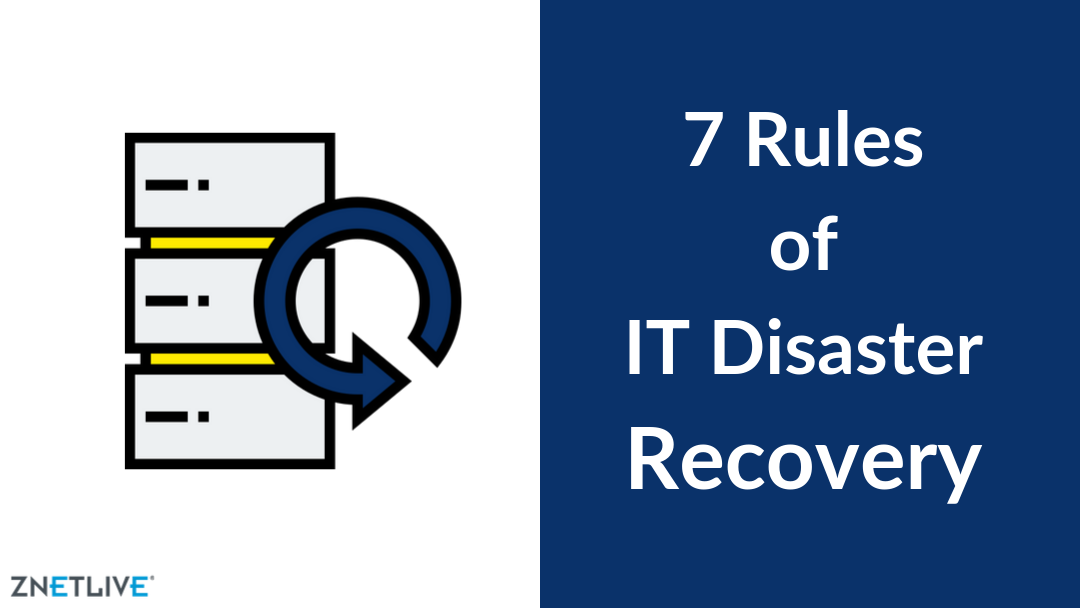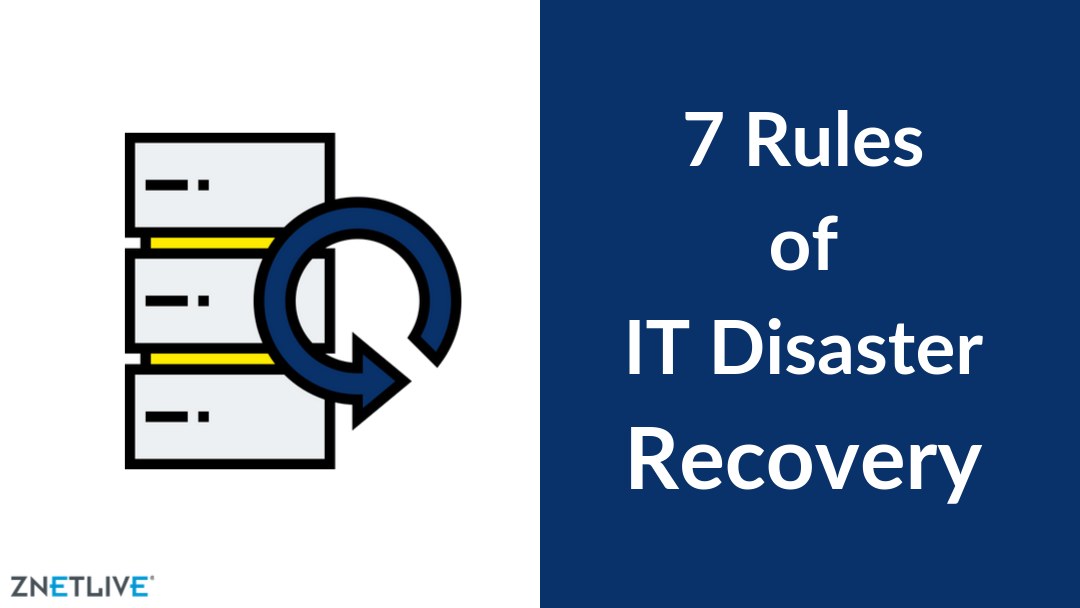IT disasters are unpredictable. Be it a malware attack, equipment failure, human error, or natural disaster, they all put the digital assets of your company at risk of becoming inaccessible, or in worse cases, destroyed.
As a result, the CIOs are burdened to work out their strategies to ensure that regular IT hiccups do not harm the business, while also putting in the advance groundwork for the enterprise during more turbulent times.
Who needs an IT disaster recovery?
Too many business owners potter along thinking cyber-attack as an IT issue only, rather than considering it as an important component to be considered while framing the business strategy. But then, there remains a lot of space for those thoughts to evolve.

The health care sector, for example, is targeted by cybercriminals as they get tremendous patient data – related to demographics, work, personal or financial information that are stored by the hospitals. These electronic health records (EHR) bring a high price in the black market, making it worth to exploit.
According to a latest report, 503 healthcare breaches were found in 2018, compared to 477 in 2017. Overall, the patient records exploitation tripled in 2018, when compared to 2017.
Other sectors are exploited by the attackers as well, as equally as the IT sector.
Most common causes of an IT disaster
There is a great number of IT disasters that can completely disturb an organization:
Minor disaster – Causes
- Simple human error
- Software error
- Loss of device
Operational disaster – Causes
- IT admin mistake
- Viruses
- Tech migration failure
- Hardware failure
Major disaster – Causes
- Hacking
- Natural disaster
- Theft of corporate data
- Employee malfeasance
And, the list goes on…
Whatever be the cause of an IT disaster in your company, it can always derail your business operations and may cause serious disruptions, like revenue loss, increased expenses, reduced productivity, as well as impact your customer services.
That is why it is important for all the companies to have a powerful disaster recovery (DR) plan.
A disaster recovery plan will guide you to minimize the disturbance to your day-to-day business operations – before, during, and after the event.
If this sounds like your business, discover ways to address such issues now or you may put your business at risk, face revenue loss or even go out of business.
7 Rules of IT Disaster Recovery
Here are 7 important rules to craft an IT disaster recovery plan:

#1 Plan ahead and document
As individuals, we don’t know when a disaster will happen, what will be the actual cause of it, or how it will impact the business, or what specifics from many choices we will have to make.
By determining what you already know and acknowledging what you don’t know, you can assume the worst events that can occur, the level of impact it will have on the business, and the type of structures or processes you will require in place to support the recovery of your business.
Based on this planning process, the business leaders should draft a document that outlines the challenges of recovery, provide the most relevant paths to consider for building back better, and explain the complete concept of operations while also describing how the structure will be used and by whom.
#2 Replicate applications
To reduce downtime, enterprises back up their data and applications. Most of them use cloud as their disaster recovery location, but don’t back up everything they need to.

Moving up the value chain, the application data should be replicated from its primary site to prevent complete failure in case of sudden disaster.
Companies need to write up their disaster recovery plan through analyzing their business, identifying their systems, applications or data that are needed. Based on the set priority, companies can set the replication frequency and retention time for backups.
#3 Plan for backups: on-site and off-site
Organizations are quite aware of the consequences of IT disasters now. They do take regular backup for data protection and recovery. Yet, many don’t replicate those backups offsite for long-term data retention.

There are advantages of each option. On-site protection, for example, allows quick and easy access to data, but what happens if the storage device that you use is lost, damaged or even stolen?
In the case of a major disaster, however, there is a better solution.
Data replication technologies are used today to protect your critical data and applications off-site. Now, with the rise of hybrid solutions, things are even easier. This will provide you the best of both options: an on-site tool for faster access, plus additional space for replication of your company’s data in the cloud for that ultimate protection.
#4 Automate
For companies dealing with large amounts of data, a disaster recovery system is a must-have.

We need clear steps to deal with such issues, and yet so many companies still rely on a manual process for operating multiple servers, validating data, testing connectivity and taking critical steps to recover, even when they know any wrong step may lead to serious damage or data loss.
There must be a more efficient way – an automated data recovery approach that offers higher ROI. The modern approach of DR includes automated verification of backup, frequent backup of applications, and many other features to make your business recovery easy and error-free.
#5 Test your plan
A disaster recovery plan is worth the cost if you know what is expected of it, otherwise, it is a useless solution. Even if the disaster recovery plan was clearly designed, tested and deployed, it may still fail as the environment changes.

Suppose, a fire breaks out at your office, and it’s been a while that the fire systems that were installed at your company were tested. Now, you know the risk of fire in the workplace. What if the sprinkler systems or fire detection systems don’t work?
That is why it is so important to test your disaster recovery (DR) plans. For this, you must regularly test that everything is operating as expected and revise the plan accordingly.
#6 Secure your environment
Cybersecurity should be a priority in any BDR plan. Your backed-up data should be protected by prevention tools and advanced encryption systems.
For security purposes, organizations store data in the cloud, however, it has its challenges too. You are unable to access the location where your data is being processed. This makes trusting cloud computing difficult for some.
In a survey conducted by RightScale on State of the Cloud, 77 percent of the respondents stated cloud security as the top concern for their enterprises.
So, keeping your data secure and private in the cloud is a major requirement now. To ensure your data is protected, you must verify the SaaS provider has the highest levels of security in place. Besides this, an advanced data encryption system should be integrated to protect your company’s data locally, with proper management.
#7 Choose your IT DR partner wisely
It is important to evaluate and select an experienced DR provider for your company – someone who has deep knowledge of your industry.

This will make it easy for you to explain the DR plans of your organization. As they are well aware of your industry, they will be able to make out the risks associated with it and share proper solutions when you are in the midst of a situation.
Strengthen disaster preparedness and recovery capabilities
As organizations mature, they learn what works and what doesn’t in both security and disaster recovery (DR) planning. Enterprises are now increasingly learning that security planning and disaster recovery planning are completely two different things and have different needs.
To summarize, the key to preparing a successful security and disaster recovery plan is to develop, manage, regularly test plans, communicate and revise methodology.









